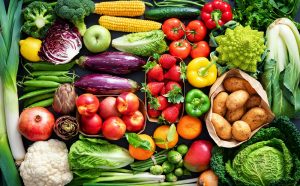
Flavonoids are naturally occurring compounds that are found in plants that have powerful antioxidant properties. The research looked at several types of flavonoids but found that flavones and anthocyanins may have the most protective effect against cognitive decline. Examples of these foods include strawberries, oranges, peppers, and apples.
The study analyzed 49,493 women with an average age of 48 and 27,842 men with an average age of 51. Each participant was required to answer questionnaires over 20 years of follow-up. The questions focused on how often they ate various foods. The consumption of different types of flavonoids was calculated by multiplying the among of it found in the food by its frequency of consumption.
Each participant was also required to evaluate their cognitive abilities twice during the study. This was done by answering questions such as “Do you have more trouble than usual remembering recent events? And “Do you have more trouble than usual remembering a shortlist of items?”
The questions are a way of capturing early memory problems when they are worse enough for the person to notice but not necessarily enough to be detected on a screening test.
After adjusting for lifestyle factors, researchers found that people who consumed more flavonoids in their diet had 20% less risk of self-reported cognitive decline compared to the people in the lowest group.
It’s Never Too Late
Lead study author Walter Willet said, “The people in our study who did the best over time ate an average of at least half a serving per day of foods like orange juice, oranges, peppers, celery, grapefruits, grapefruit juice, apples, and pears. While it is possible that other phytochemicals are at work here, a colorful diet rich in flavonoids – and specifically flavones and anthocyanins – seems to be a good bet for promoting long-term brain health. And it’s never too late to start, because we saw those protective relationships whether people were consuming the flavonoids in their diet 20 years ago, or if they started incorporating them more recently.”
When it comes to preventing thinking skills from declining, this study adds to mounting evidence that flavonoids can go a long way. There is no better time to start adding some color to your plate, so stock up healthy fruits and vegetables that offer brain-protecting qualities.